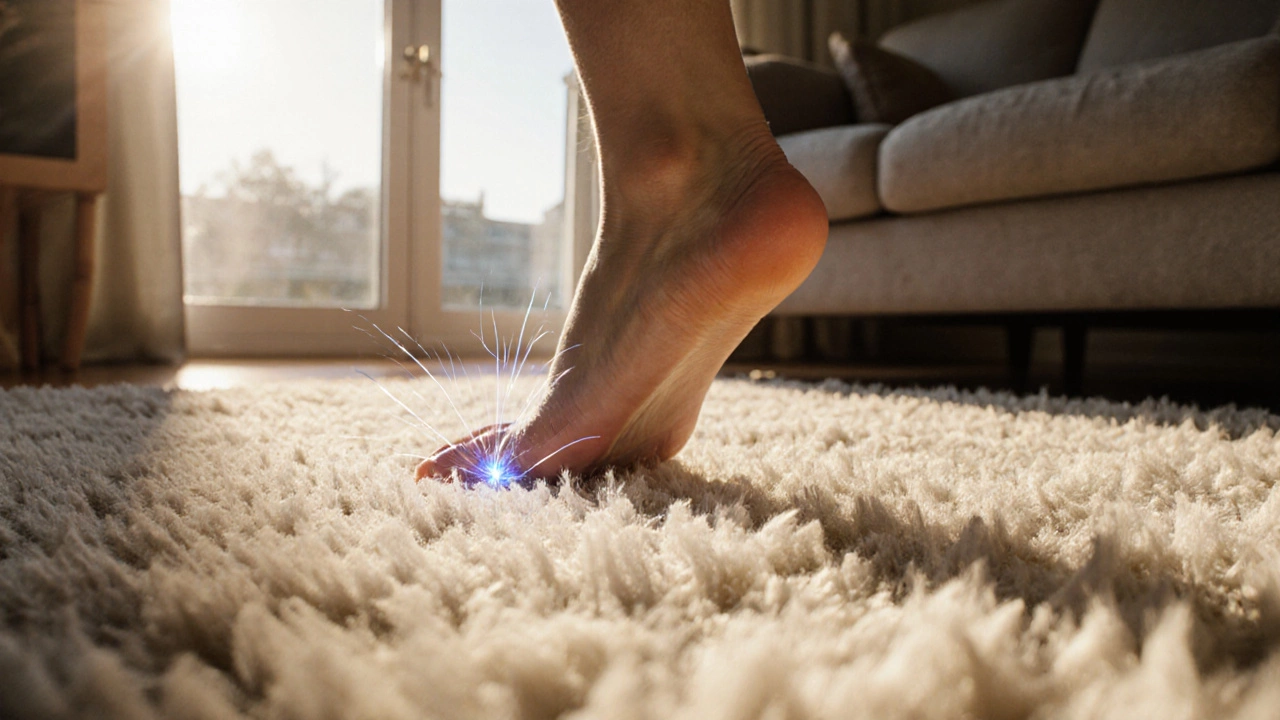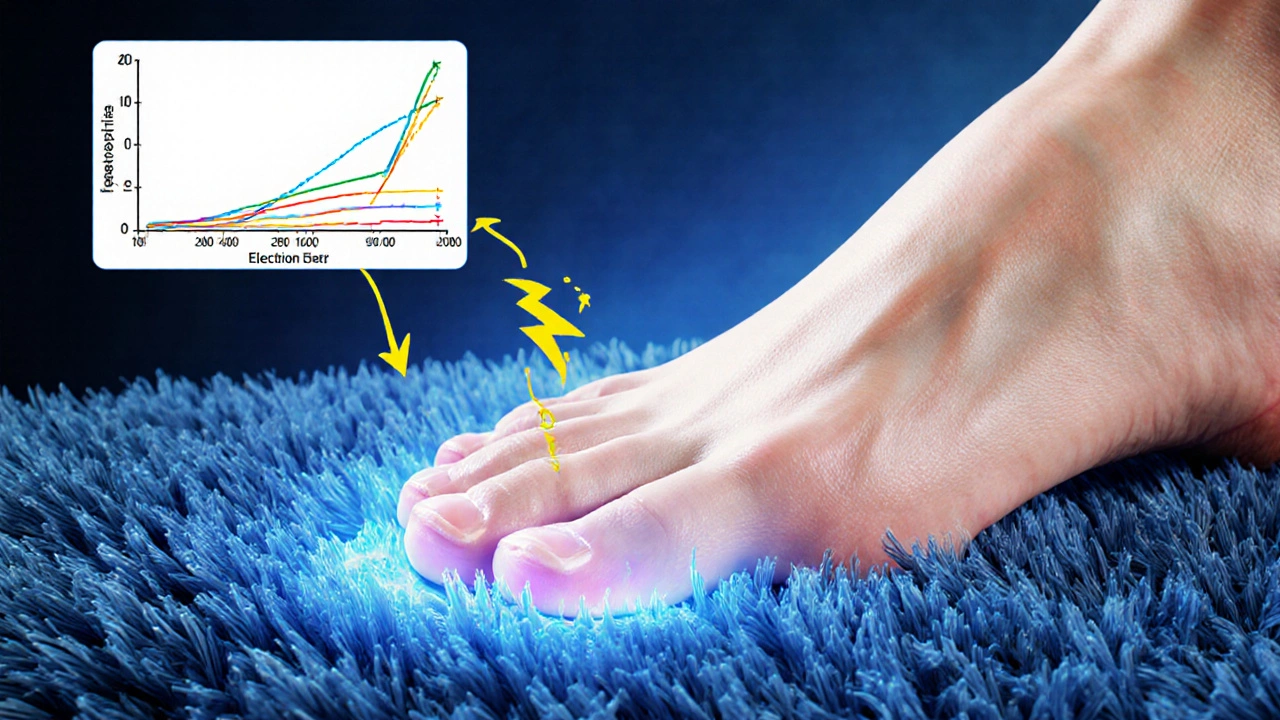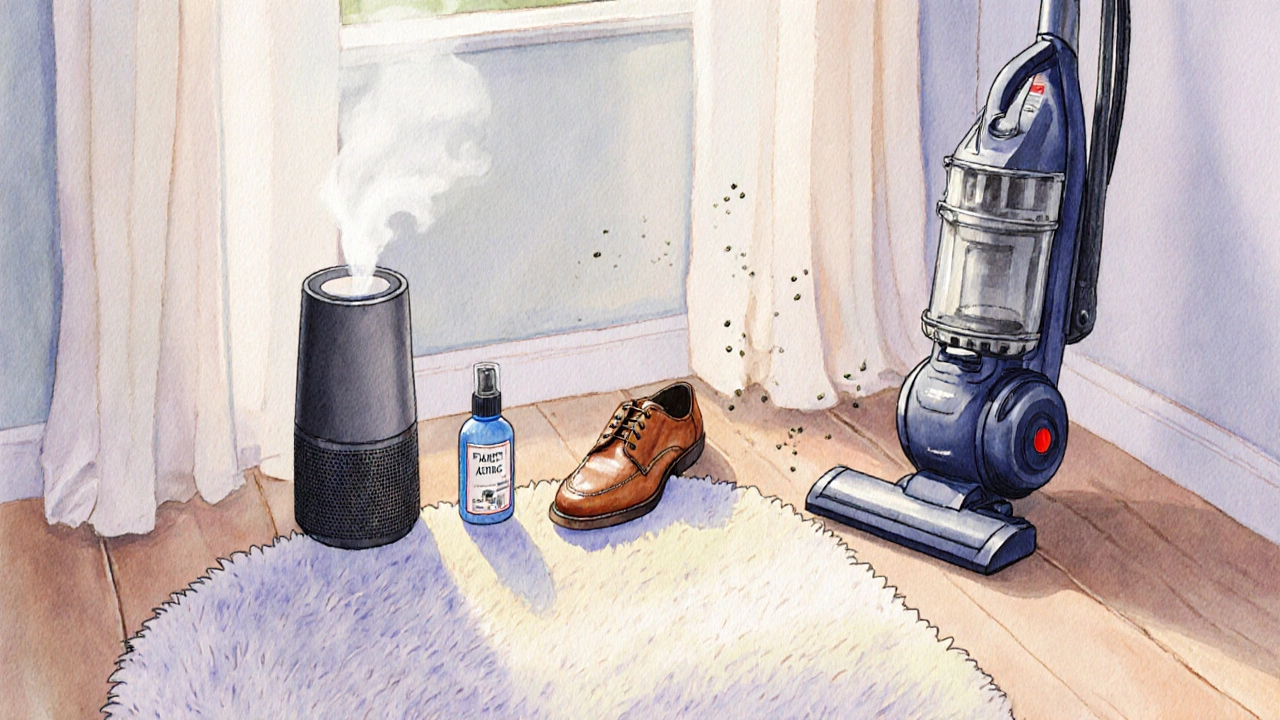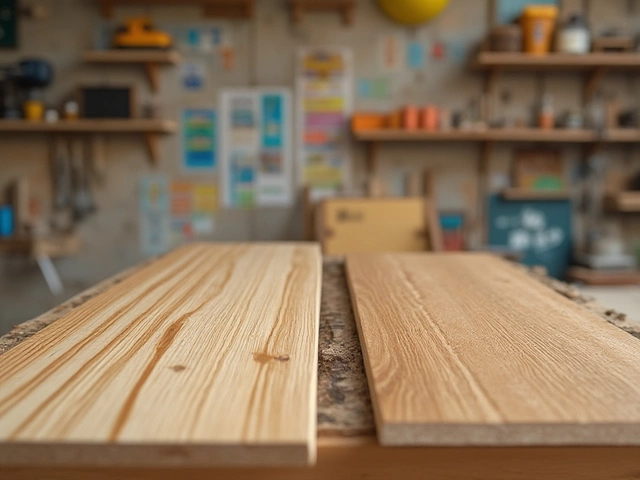
Static Shock Calculator
Ever walked across a living‑room rug and felt that sudden snap, or noticed your hair standing up after a quick foot rub? That tiny jolt isn’t just a quirky foot‑massage-it’s a mix of physics, chemistry, and even a bit of biology happening right under your toes. Below we break down what actually occurs when you rub your feet on a rug, why it matters for your health, and how to manage the side effects without ditching your favorite floor piece.
What a Rug Really is: The First Definition
Rug is a fabric‑based floor covering that can be woven, tufted, or knotted from natural fibers like wool or synthetic strands such as nylon. It sits atop a sub‑floor and serves both aesthetic and functional purposes, from cushioning footsteps to defining a room’s style. While its visual appeal draws most attention, the real action starts at the microscopic level when your skin contacts the rug’s fibers.
Static Electricity: The Invisible Player
Static electricity is a build‑up of electric charge on the surface of a material caused by the transfer of electrons when two different substances rub together. It’s the same phenomenon that makes a balloon cling to a wall after you rub it on your hair. In the case of a foot‑rug interaction, electrons move from one surface (usually the foot’s skin) to the other (the rug fibers). The direction of transfer depends on each material’s electron affinity, described by the triboelectric series.
Why Your Foot Gets Charged
- Material Matters: Wool, polypropylene, and nylon each sit at different points on the triboelectric series. Wool tends to donate electrons, becoming positively charged, while synthetic fibers often gain electrons, ending up negatively charged.
- Moisture Levels: Dry skin and low indoor humidity (below 30 %) make it easier for charges to accumulate because water molecules act as a natural conductor that dissipates static.
- Surface Roughness: The more uneven the rug’s surface, the greater the contact area, increasing the chance of electron transfer.
When you take a quick slide or a playful shuffle, you create a rapid separation of charge. The foot becomes one polarity, the rug the opposite. The stored energy looks harmless until a conductive path-often a metal doorknob, a light switch, or even another person-offers a discharge route.
Health Implications of the Shock
Most people think of the static “zap” as just a surprise. In reality, repeated discharges can have subtle effects:
- Skin Sensitivity: Tiny sparks can irritate sensitive skin, especially for people with eczema or dry conditions. The sensation may feel like a mild pinch, but it can aggravate existing dermatitis.
- Hair and Scalp: A static buildup on your scalp can cause hair strands to repel each other, leading to the familiar “frosted” look after walking on a carpet.
- Cardiovascular Concerns: While a static shock’s voltage is high (several thousand volts), the current is minuscule-usually under a microampere-so it poses no real risk to heart rhythm. However, individuals with implanted pacemakers should still be cautious because sudden electrical spikes, even tiny, can interfere with device sensors.

Rug Materials and Their Static Profiles
Not all rugs are created equal when it comes to static. The table below compares common fibers and their typical static‑generation tendencies under standard indoor conditions (22 °C, 40 % RH).
| Material | Triboelectric Position | Typical Static (V) | Best‑Case Mitigation |
|---|---|---|---|
| Wool | Positive (electron donor) | 2,000‑3,500 | Anti‑static spray, humidifier |
| Silk | Near neutral | 1,500‑2,200 | Natural humidity |
| Nylon | Negative (electron acceptor) | 2,200‑3,800 | Grounded backing, dryer sheets |
| Polypropylene | Strong negative | 3,000‑4,200 | Anti‑static fibers, humidifier |
| Cotton (blended) | Weakly positive | 1,200‑2,000 | Regular cleaning |
Beyond the Shock: How Rugs Influence Indoor Air Quality
Rugs can trap dust, pollen, and even microscopic dust‑mite allergens. When you rub your feet, you may stir these particles into the air, potentially aggravating respiratory conditions. Here’s what to watch:
- Dust Mites: Thrive in the warm, humid pockets of carpet fibers. A quick foot rub can release allergens, triggering sneezing or asthma attacks.
- Volatile Organic Compounds (VOCs): Some synthetic rugs off‑gass chemicals like formaldehyde, especially when new. Friction can momentarily increase VOC release.
- Micro‑fibers: Very fine fibers can become airborne during vigorous rubbing, contributing to indoor particulate matter.
Maintaining a clean rug not only reduces static but also keeps the breathing environment healthier.
Practical Tips to Tame the Static
- Boost Humidity: Use a humidifier to keep indoor RH above 40 %. Moist air provides a conductive path that drains excess charge.
- Choose Anti‑Static Backings: Many modern rugs come with a metalized or conductive backing that grounds the fibers.
- Apply Anti‑Static Sprays: A light mist of a commercial anti‑static solution (or a homemade mix of water and a few drops of fabric softener) can reduce charge accumulation.
- Wear Shoes with Leather Soles: Leather conducts electricity better than rubber, allowing static to bleed off gradually instead of building up.
- Regular Vacuuming: Removes dust and oils that increase friction, and many vacuums now have anti‑static filters.
- Ground Yourself: Touch a metal object (e.g., a metal doorknob) before walking on the rug to discharge any pre‑existing charge.

When to Replace or Upgrade Your Rug
Even with the best care, some rugs become static‑hotspots over time. Consider replacement if you notice any of these signs:
- Frequent, strong shocks despite humidity control.
- Visible wear that exposes the backing or creates uneven surfaces.
- Persistent odor, indicating VOC off‑gassing.
- Allergy symptoms that worsen when you’re in the room.
Switching to a low‑static material-such as a natural fiber blend with a grounded backing-can dramatically improve comfort.
FAQ - Frequently Asked Questions
Why do I get a shock after walking on a carpet?
The friction between your shoes (or bare feet) and the carpet fibers transfers electrons, creating a static charge that discharges when you touch a conductive object.
Can static electricity from rugs harm me?
The shock is uncomfortable but generally harmless. The current is too low to cause injury, though people with certain medical implants should take extra precautions.
Does humidity really reduce static?
Yes. Moist air provides a conductive path that allows charges to bleed off, cutting the voltage build‑up that causes shocks.
Are synthetic rugs worse than wool for static?
Synthetic fibers like nylon and polypropylene tend to generate higher static because they sit lower on the triboelectric series, meaning they attract electrons more readily.
How often should I vacuum my rug to keep static low?
A weekly vacuum is a good baseline. If you have pets or high traffic, twice a week helps remove dust and oils that increase friction.
Takeaway
Rubbing your feet on a rugs isn’t just a quirky habit-it’s a small physics experiment that can affect your comfort, skin, and even indoor air quality. By understanding the role of material, humidity, and cleaning, you can keep the static at bay while still enjoying the warmth and style your favorite floor décor brings.




